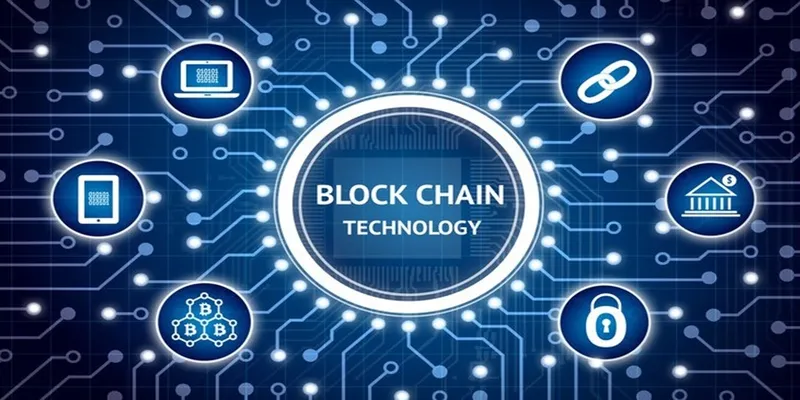

The reality blockchain

There has been a lot of hype regarding the Blockchain. I have read about the blockchain removing the poverty and making the world corruption free with a lot of easy, but there is demography who has not heard about this revolutionary technology. Facebook, Flipkart, Instagram has millions of users but the general population does not know anything about the backend technology like the database. Same is with the blockchain, everyone has heard of it, everyone has an opinion about it but no one knows the backend process.
However, there is a very good question revolving nowadays which is “What are the things which blockchain can do and other technology can’t?” Is it fair to compare this new technology to the past technologies?
Concept of Blockchain
The blockchain has a fascinating concept of data immutability i.e. data is unchangeable. This is achieved by using digital signatures and hash functions. These hash and digital signatures were defined by the informational Technology Act of India in the year 2000. More often than not the blockchain is equated with the distributed database and software development frameworks. Blockchain is not just database, they are more than that. The blockchain is peer to peer systems of electronic cash in which network timestamps are used is done by hashing the current work. This record is immutable i.e. it cannot be changed without redoing the same work.
Blockchain vs. bitcoin technology
Recently big chain made the headlines for all the bad reason like money laundering, evasion of tax, financing of terrorism and organized crime. Its comparison is not good as the actual money; diamonds, gold were also used for doing wrong activities. So it is not good, as far as the blockchain is concerned.
The basic idea behind the blockchain is that it runs on a set of global computers. It requires huge computational power and resource to mine the bitcoin and yes! Anyone can mine the bitcoin in expense of the resources like processor speed and memory. However, it will take a huge amount of time to generate the bitcoin. That is why supercomputers are used to generate them due to their high speed and memory.
Everything about the private blockchain
In today’s times, there exists several blockchains in the world. However, anyone cannot be a part of the private blockchain. These private blockchain does not require computational resources like processor and memory. It requires permission to have access and control over it. Let us understand this concept using multi-chain which has 8 types of permissions explained below:
Connect: This permission is used to connect to the other nodes and helps to view the content
Send: This permission assists in sending the sign inputs for signature
Receive: This permission assists in receiving the outputs of transactions
Issue: This permission facilitates to issue the assets like transaction sign inputs which are used to create new native assets.
Create: This is used to create sign inputs which create streams
Mine: This is used to sign coinbase transaction metadata
Activate: This is used to change the connect, send, receive permissions
Admin: This is used to change permissions of issue, mine, activate and admin
There are many popular blockchains available in the market like Ethereum, BigChainDB, Chain, Hyperledger Iroha, Corda, Credits, Domus Tower Blockchain, Sawtooth Lake, Elements, Eris, Quorum, HydraChain, Hyperledger Fabric, Stellar, Hyperledger Multichain, Openchain, and Symbiont Assembly.
Use case of blockchain
There are various use cases of good blockchain. Some of the use cases are as follows
Insurance Sector: In the insurance sector, blockchain is used to verify KYC data, life insurance, national policy, agent information registry and claim records.
Banking Sector: There are various use cases of blockchain in the banking sector. For example, it is used in asset tracking and registry, multiparty aggregation, financial systems, record keeping etc.
Government use case: Government has been involved in using this technology for maintaining copyright health records, regulation records, authentication of records, academic records verification, vehicle records, maintaining identity documents, police and court records etc.
Other use-cases: It is widely used in Corporate finance book-running, Asset-backed virtual currencies, Regulatory reporting, Clearing & settlement, Securities settlement, Depository receipts, Escrow, Secure documents, Supply Chain Management, Fund portfolio management, Voting, Payment gateway, Peer-to-peer trading, Securities servicing, Identity management, Securities trading, Auctions and Contract management.
Conclusion
The blockchain is very interesting hot-topic in the recent time. But it has been associated with many malpractices but we should skip the hype and this technology must be given a good chance as it can do wonders. This technology must be given chance because technologies before the blockchain were vulnerable to malpractices. It is not as if only after the launch of blockchain, frauds and other bad practices are there. I believe that this technology has enough power to rule the future and will provide a safer platform than before in the future.
So in case you are looking for a blockchain app development company, you can right away contact us to create a next big blockchain based concept mobile app.





